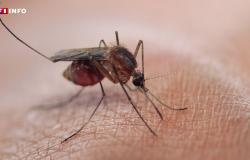It’s the end of the summer holidays for more than a million primary and secondary school pupils who are due to return to school this week. While the start of the school year is synonymous with celebration and reunion for some, it creates stress for others.
For a large proportion of students, this period is above all an opportunity to reconnect with a routine and familiar reference points. For a large proportion of young people
going back to school is something exciting, explains Jonathan Bluteau, psychoeducator and professor at the Faculty of Education at theUQAM. It’s a return to a routine and the child likes it.
he adds.
It is completely normal to feel stressed about going back to school. This stress can even be positive, such as the excitement of seeing friends or staff again after the holidays.
However, it is important to recognize that children who are more fearful or anxious may be particularly sensitive to what this time may bring.
Well-known stressors include unpredictability, novelty, feelings of ego threat, and diminished sense of control.
explains Mr. Bluteau.
It is certain that not knowing your teacher
his new classmates or to enter a new school are factors that can trigger stress
. If the child is vulnerable to anxiety and things stress him out with going back to school, he may have more anxious thoughts
explains Mr. Bluteau.
This is what can make the start of the school year stressful, especially because young people are experiencing the novelty and [qu’]they have to learn a new routine
he specifies.
The transition from the often quieter summer schedule to a school routine is a potential stressor, but that doesn’t mean all students will feel it.
Distinguishing stress from anxiety
Professor Jonathan Bluteau distinguishes between stress and anxiety:
Stress usually comes from situations in our daily lives. It is often related to real events or circumstances, such as a change in routine.
Anxiety develops when a person experiences fears that are not real.
The challenge of the transition between primary and secondary school
The transition from primary to secondary school is distinguished by its magnitude and the simultaneity of the changes that young people face.
By changing their school environment, students face new expectations: new assessment methods, new social dynamics with more teachers and peers of different ages
explains Stéphane Duchesne, full professor in the Department of Teaching and Learning Studies at Laval University.
At the same time, this period coincides with the emergence of puberty, leading to biological, cognitive, social and identity transformations typical of adolescence.
notes Mr. Duchesne. All these changes are converging at roughly the same time, which makes this transition a period particularly rich in new experiences.
Open in full screen mode
Arriving at secondary school is an important moment in a child’s school life. (Archive photo)
Photo : iStock
The arrival at secondary school is still welcomed with enthusiasm by the majority of young people
says Stéphane Duchesne, but it remains nonetheless that it can also generate worries and concerns, particularly with regard to the ability of young people to meet new academic expectations, to make friends or to ensure that teachers take an interest in them.
.
According to Mr. Duchesne, the Quebec school system places a lot of importance on performance and academic achievement. According to studies, Up to 40% of young people are concerned about their academic success
.
There is a pressure that is present among students to succeed. Very early on, you are taught that succeeding in school is important because, eventually, it will allow the child to go to secondary school or to be in a study program of his choice.
Staff shortage in education
According to the latest update from Quebec, 3,858 teaching positions remain to be filled. Many students will begin the school year without a regular teacher.
It is certain that students will not be left to their own devices when school starts again.
assures the president of the Autonomous Federation of Education, Mélanie Hubert. If a teacher cannot be found in time, substitutes or members of the daycare service will stand in front of the class.
Open in full screen mode
Schools are looking to fill some teaching positions with just days to go before the start of the school year. (File photo)
Photo: The Canadian Press / Nathan Denette
For children, having teacher stability at school is important.
If there is no stability at school, it can become a source of stress.
Geneviève Pelletier-Beaulieu adds that the lack of stability affects the functioning of the young person
by causing various reactions in students, such as stress or social withdrawal. If a child becomes attached to their teacher and the teacher leaves, it can be very insecure.
she says.
She also points out that the shortage of teachers is causing fear among parents, who may feel helpless in supporting their children in this unstable context.
How to support your child?
For Geneviève Pelletier-Beaulieu, Basically, going back to school is demanding
It represents the beginning of a new routine for the whole family, often accompanied by the return of extracurricular activities and sports practices.
Although parents can be just as busy, Geneviève Pelletier-Beaulieu recommends that they stay physically and emotionally available as much as possible
especially during the first week of school, to be the family landmark
.
To help your child feel safe when they return to school, it is important to: introduce a routine
as soon as possible, advises Julien Bluteau. He recommends that parents, ideally before the first day of school, gradually reduce their child’s screen time and gradually put them to bed earlier, to reach the time they should go to bed during the school year.
Toolbox to support parents:
As for the fears that students might feel about going back to school, researcher Stéphane Duchesne advises parents to Do not take worries lightly or dramatize them. The ideal is to guide the child towards possible solutions, reminding him of his strengths.
.
For the transition from primary to secondary, he recalls that For the parent, it is important to discuss with the child
of this change. It is essential to understand how the child looks forward to the changes that are coming, while displaying enthusiasm and showing him that what is coming is exciting
.
Parents and teachers can put pressure on how they approach a student’s academic performance.
Often, as parents, we have the reflex to look at the group average and want to compare our child’s success in relation to this average.
explains Mr. Duchesne. However, the average is not a good indicator of a student’s success, because it varies depending on the group, adds the professor.
It is better for parents lead their child to compare himself to himself
depending on his efforts, his progress and the achievement of his objectives. The child is very aware of his position in relation to others
note Stéphane Duchesne.






